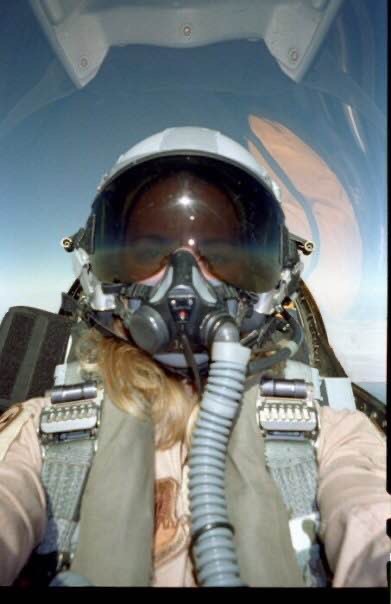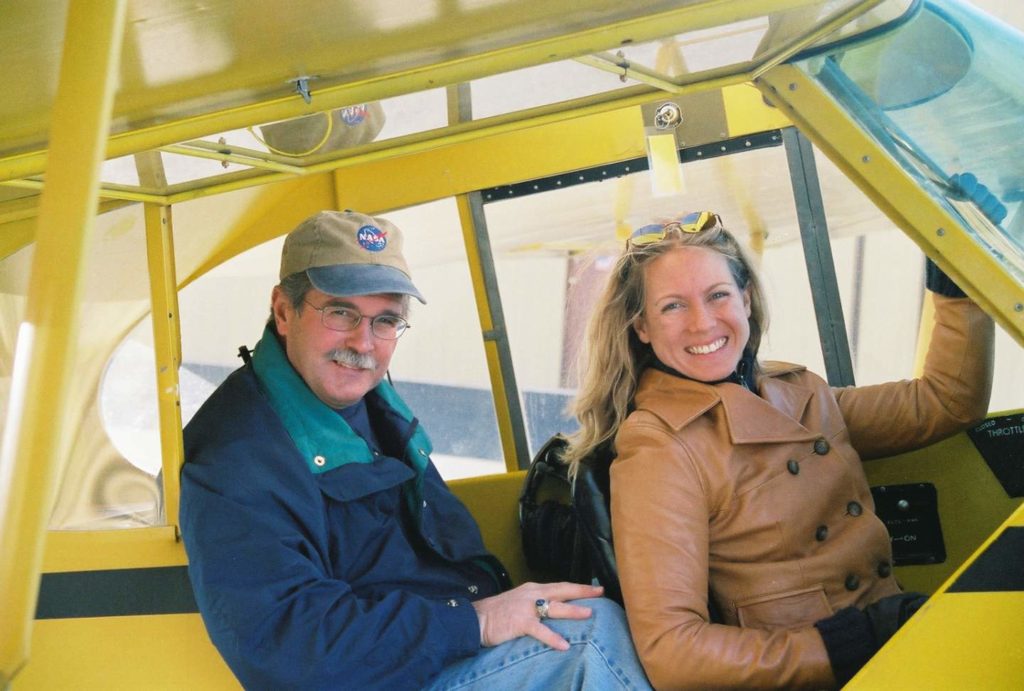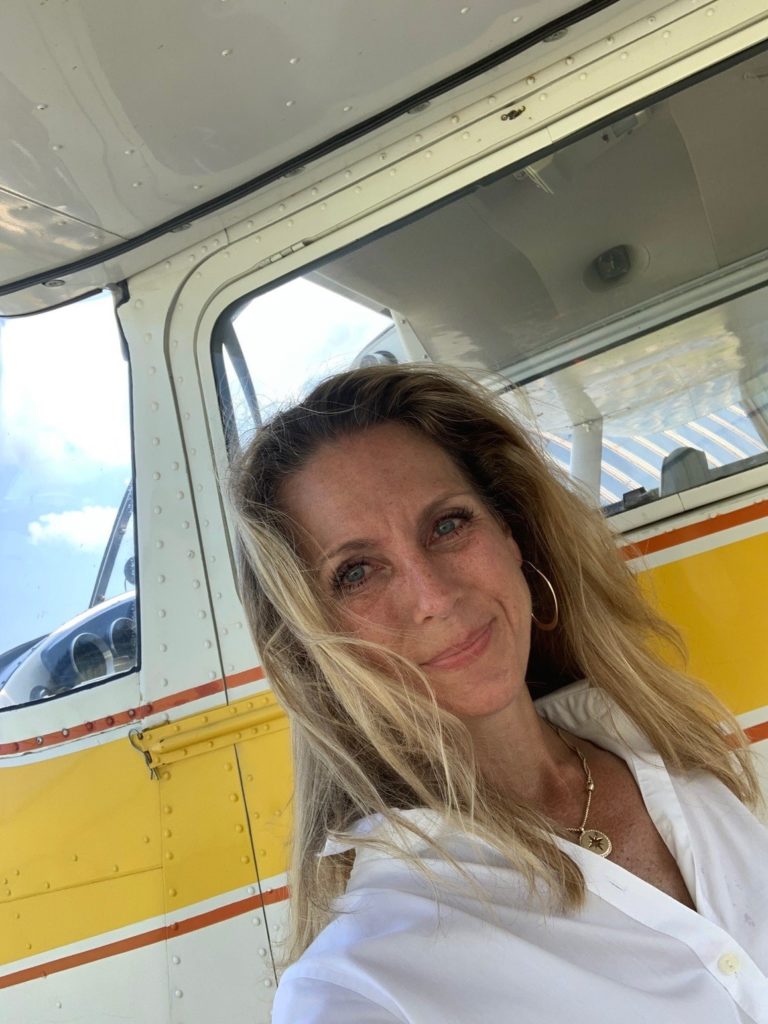Estimated reading time 16 minutes, 49 seconds.
Heather “Lucky” Penney, former D.C. Air National Guard pilot, should be famous for her September 11, 2001 (9/11) mission to take down United Airlines Flight 93 — but there is a good chance you haven’t heard her story. Penney is humble, and her modesty reaches so deeply that when she reflects, she doesn’t see herself as one of 9/11’s heroes – but rather a participant in a “failed mission.”
Today, she tours the U.S., sharing her story. And it’s “that time of year” again for Penney, as another anniversary approaches. This year marks the 20th anniversary; interview season will take on a whole new level of expectation regarding a story she admits she wishes had turned out much differently.

On that day two decades ago, the (then) 26-year-old “rookie pilot” woke up to blue skies and unseasonable warmth. But, unbeknownst to her, it would be the day that changed her (and aviation) forever.
She remembers the moment she heard that a plane had hit the World Trade Center. It was during a typical morning briefing at Andrews Air Force Base. Someone entered the room to deliver the message. Assuming it was a “general aviation plane” error, the meeting resumed. The door would open a second time; this time, the announcement was clear — it was no mistake.
And as reports circulated that a third commercial aircraft, American Airlines Flight 77, had hit the Pentagon, news of a fourth hijacked plane — United Airlines Flight 93 — heading towards Washington, D.C., began to surface.
Without hesitation, Col Marc “Sass” Sasseville — Penney’s commanding officer — stood up and said, “Lucky, you’re coming with me.”
The assignment that day was a “suicide mission,” and at just 26 years old, it would likely be Penney’s last.

Nevertheless, Penney and Sasseville suited up and mentally prepared; there would be no time for pre-flight checks or to wait for weapons to arrive for their F-16 fighter jets. The two pilots knew what they had to do. They would “ram” the United Airlines jet (with their aircraft) to take it down.
“Refusing the mission never crossed my mind,” Penney told Skies. “It just simply didn’t.” There was no way she wanted to “get left behind.”
“I didn’t want to stay on the ground. I wanted to get airborne and do whatever it took to protect our people, to protect our nation, to protect our way of life. So, it just never occurred to me to say, ‘No,'” she recalled.
Penney is often asked who ordered her to ram her aircraft into Flight 93. The answer is: no one. Once the orders were given, the plan was “unspoken.” And because they had no weapons, there would be only one way to stop a Boeing 757-200 aircraft. Penney would ram the tail, and Sasseville would hit the cockpit.
No one would survive.

And if this wasn’t tragic enough, at the time, Penney’s father (John C. Penney) was a captain at United Airlines, and this was his route. She had no idea if the aircraft she was set to take down was his flight, but she knew the importance of her mission had to take precedence.
In the end, her father wasn’t the captain of Flight 93, and the commercial aircraft would go down at the hands of its heroic passengers — their stories told for decades thereafter.
“I really truly believe, and I felt for a long time, that we were mission failures,” she said. “Not because we were lacking, but because the system failed everyone. It took so long for us to be able to get airborne. It changed me. . . . I didn’t really think about 9/11 because we didn’t do anything; we were failures.
“We weren’t the heroes that day,” she continued. “The passengers on Flight 93 were the heroes.”
Born on an Air Force base in Arizona, Penney’s father (John) was an Air Force pilot (LTV A-7 Corsair II). The family would later move to Florida and Hawaii as John raised ranks. Penney remembers idolizing the camaraderie her father and fellow Air Force pilots relished.
She went into college believing she could be a fighter pilot — no one (including her father) had told her otherwise. Defeated, when she learned it might not be an option for her, she said she took the “academic route.” In 1993, Congress overturned the law prohibiting women from flying in combat. Just three years later, she would apply to the National Guard in the District of Columbia, earning her wings at the Euro-NATO Joint Jet Pilot Training Program (flying the T-37 and T-38). In 1998, she was appointed as an Air Force officer. Penney would join the Air Force as one of the first female fighter pilots to enter straight from pilot training.

“The first and only woman in the 121st Fighter Squadron,” Penney “deployed to Operation Iraqi Freedom for initial combat operations as a night-time SCUD Hunter in the western deserts of Iraq, also supporting Special Operations Forces.” She flew the F-16 for 10 years before making the difficult decision to leave fighter aviation as a single mother.
Today, after serving two tours of duty in Iraq, the U.S. Air Force Air Superiority director at Lockheed Martin Aeronautics Company holds well over 3,600 flight hours – with over 1,000 hours in the F-16.
“I’m not even sure how many airplanes I’ve flown,” Penney laughed. She remains current in corporate aviation. But these days, she admits, the bulk of her flying is in “vintage aviation.”
As a defense policy expert and analyst for the Mitchell Institute for Aerospace Studies, Penney is “still deeply involved in national security and national defense,” and continues to try to think about how “we appropriately resource and prepare our nation’s Air Force.”
She recently launched Athena’s Voice, which she describes as “a women, veteran-owned speaking agency featuring female veterans who guide their audiences to soar to new heights through the wisdom of their experiences.”

As a certified flight instructor, Penney enjoys introducing women to aviation.
“Women fly for the adventure. We fly because it’s a way to prove ourselves to ourselves,” she said. “There is this amazing transformation of character and confidence when women learn how to fly. . . . They become more assured. They’re willing to take more risks. They learn a discipline and a work ethic that they’re able to expand across their entire life.
“And so, learning to fly isn’t just about becoming a pilot. Learning to fly is really about discovering yourself and transforming yourself into the woman you’re meant to be. I just love aviation and how much it’s given to me, and I want to be able to give back.”
She’s seen as a hero for what she was willing to do on September 11, 2001, but she doesn’t see herself as “special.”
“I just happened to be standing at the Ops Counter when we finally got the call. The truth is, any one of us would have made the same decision, would have been willing to do exactly what I was prepared to do — and what the passengers on Flight 93 did do,” she said.
“And I’ll be honest… I think the vast majority of people, if they were in my position, would have made that same decision. At that moment in time — when the demand in the mission was so clear, and the need was so clear — it just never occurred to me to say no.”
During a memorial service back in 2017, former U.S. vice president Mike Pence said, “Without regard to personal safety, they rushed forward to save lives. I will always believe that I and many others in our nation’s Capitol were able to go home that day and hug our families because of the courage and sacrifice of the heroes of Flight 93.”
September 11 will forever be remembered as the day that commercial airliners were hijacked for use as weapons of terrorism. However, to Penney, recalling and reliving the events each anniversary only serves the terrorists. Instead, she chooses to focus on mediative and healing activities. When Penney and her now-husband set a date to get married, they chose Sept. 12 with the intent to provide something powerful and positive to overshadow inevitable reminders.

“9/11, for all its pain and tragedy, is indeed a story to be told and remembered. And in the years since 9/11, the airline industry has become more safe, more accessible . . . more proficient, and even more influential than ever before,” said National Air and Space Museum deputy director Christopher Browne, while introducing Penney during a CPAC broadcast.
But if you ask Penney, she was “just a wingman” who witnessed history. And it’s her mission to not tell a story that taps into “fear and trauma and the ‘angertainment’ that grips our media today.” She chooses, instead, to highlight the everyday heroes of that day and the days that followed — people became kind and considerate and stopped taking life and relationships for granted.
“[On September 11], I typically try to make it as normal and as low-key as possible,” said Penney. “If the weather’s good, I’ll fly. And in a way, to me, that honors the pilots in the air and the crew of the planes that were lost that day.”
As the 20th anniversary of 9/11 approaches, the legacy can’t just be about terror and lives lost — but rather how anyone can connect with their inner hero.
“And it’s also a big F-you to how the terrorists abused and warped aviation,” said Penney. “And in many ways, that’s why I’ve tried to make that day as low-key and as ordinary as possible — because what they were trying to do was disrupt our way of life.
“They were trying to make us afraid. They were trying to divide our nation, to change the American way of life,” she continued. “So, by being ordinary, it’s not that I’m not remembering. The whole tagline is ‘Never Forget.’ But it’s showing that even in the face of fear, we can continue with our way of life — refusing to be afraid and refusing to give in to the fear and the trauma.”








